
views
X
Research source
Recognizing Symptoms of Heartworm

Listen for a cough. At first, you might hear your dog softly cough and assume that he's just under the weather. But, if your dog has heartworm disease, the dry cough will linger. You may notice your dog mildly coughing for weeks. Coughing becomes more noticeable after exercise, so pay attention to your dog after you take him out. Check your dog's respiratory rate, too. If they're experiencing 45 to 50 breaths per minute while they're relaxing comfortably, there could be something bigger at play, like heartworm.

Monitor your dog's energy level. You may realize something is wrong with your dog's behavior before you even suspect he may have heartworms. Your dog might seem excessively tired after moderate exercise or he might lag behind you on a walk. This lack of energy is a symptom of heartworms. For example, if your usually energetic dog no longer wants to exercise, you should consider that he's unwell.

Pay attention to your dog's appetite. You might notice that your dog's appetite changes. Specifically, he won't be as interested in food or treats and won't eat very much. This causes weight loss, another symptom of heartworm infection. As the infection progresses, you may also notice that while your dog is losing weight, his abdomen swells. This is because fluid fills the abdomen.

Watch for signs of advanced heartworm. If your dog has had heartworms for a while, the symptoms may get worse. These severe symptoms include fainting, collapsing, or even death. If your dog shows any signs advanced signs of heartworm infection, take him to the pet emergency room immediately. Some dogs might suddenly have trouble breathing at the same time they pass brown colored urine. You may also notice your dog's gums are pale. These are all signs of Caval syndrome (an advanced condition of heartworm) which is caused by a sudden breakdown of red blood cells. Your dog's abdomen may also look a little bigger. This can can be a sign of fluid accumulating in their belly if the heart's not working well to properly pump fluid throughout the rest of the body.

Consider how far progressed the heartworm infection is in your dog. If your dog has heartworms, symptoms can vary. For example, he may show no signs or may have breathing difficulties. Since symptom severity can vary from dog to dog, veterinarians often use a "three group" system to describe how far progressed heartworm disease is in a particular dog. These groups are: Group I: infection is confirmed but the dog has no symptoms or only an occasional cough. This group has the most optimistic outlook for treatment. Group II: the dog coughs regularly and doesn't like to exercise. Group III: the dog has severe breathing difficulties, fainting spells, and signs of right-heart failure such as a swollen abdomen and swollen limbs.
Getting a Medical Diagnosis

Get a physical examination. If your dog has any heartworm symptoms, take him to a veterinarian for an exam. The vet will use a stethoscope to listen to your dog's heart rate and rhythm, as well as his lung sounds. Your dog's blood will also be tested for heartworm infection. If your dog doesn't have many worms, there may not be any detectable changes or symptoms which is why a yearly blood test is important.
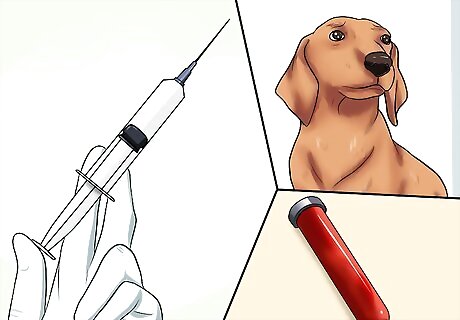
Do additional testing. If your dog's blood test comes back positive for heartworms, the vet may want to run other tests like an ECG (which looks at the heart's electrical activity), radiographs (which check for heart enlargement), and echocardiography (which visualizes the heart, the numbers of worms, and the damage done). These help the vet to assess your dog's condition, the likelihood of treatment being successful, and the risks of treatment. In rare circumstances, the blood test could come back negative, but the vet might want to run an echocardiogram to try to see if there are worms. If your dog tests positive for heartworms, the vet will run another test to confirm the diagnosis.

Get a second blood test. If your dog is in the early stage of heartworm infection or only has male worms, the blood test may come back negative (especially since it only tests for proteins given off by female heartworms). If the vet is suspicious of a negative result (like in a puppy, where there is a greater chance of a low worm count), the vet may run Knott's test. With Knott's test, a sample of blood is spun down and the concentrated sediment is examined for signs of heartworm. Since heartworm larvae take several months to mature before they're detectable, it's important to test dogs twice if they haven't been on regular preventative treatment. Each blood test should be separated by 6 to 7 months so the heartworm infection is detectable.

Follow treatment recommendations. The vet will probably want to inject your dog with a heartworm treatment to kill the worms. Your dog might need to be stabilized and given pain medications. While your dog may feel poorly because of the adult worms dying inside the blood vessels, the medication is effective at killing heartworms within 1 to 3 months. Since your dog probably feels unwell when he's diagnosed, the vet might want to stabilize him with heart medications. This will improve his circulation before treatment.
Understanding and Preventing Heartworm
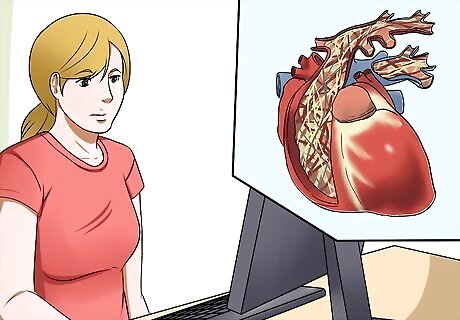
Learn about the heartworm parasite. Heartworms are parasitic worms that live in the heart and blood vessels of the host. The severity of infection in dogs is determined by how many worms they have. Since heartworm infection is a progressive disease, it will get worse over time because the worms breed to produce more worms. Heartworm infection is a transferable disease that has been confirmed in dogs in 50 states.
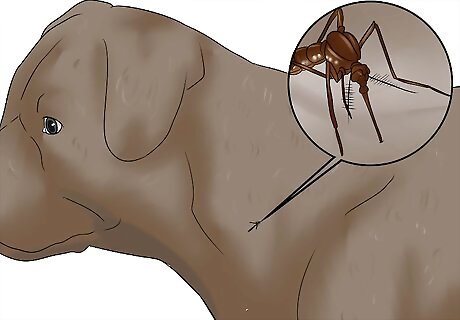
Understand how your dog can be infected. Heartworms are transferred by a host, a mosquito. A dog can become infected when an infected mosquito bites him and injects heartworm larvae into the dogs tissue. It takes about 6 months for the larvae to mature and breed. Heartworm infection is regularly found in tropical and subtropical regions since these are the perfect conditions for mosquitos to breed.
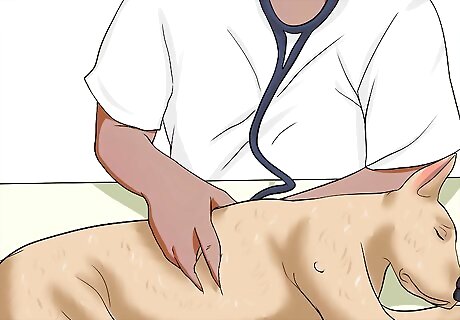
Get your dog screened for heartworms. Since heartworm symptoms may take several years to develop, it's important to routinely test your dog (at least once a year, even if your dog is on a regular preventative). Most dogs are diagnosed between the ages of 2 and 8. It's rare to diagnose puppies under one year of age with heartworms because the heartworm larvae (Microfilaria) take 5 to 7 months to mature before causing health problems.
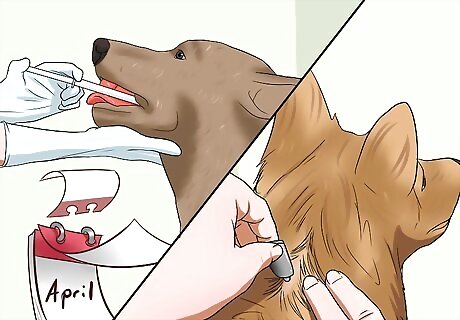
Give a monthly preventative. Talk with your veterinarian about what kind of monthly preventative you should give your dog. The veterinarian will explain how to administer the medication and what dose you should give. Regardless of what type you choose, make sure not to miss a dose. Types of preventatives include: Oral tablets Topical (spot-on) treatments Injections

















Comments
0 comment